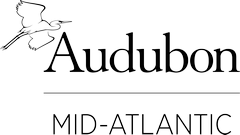Salt marshes in the Chesapeake Bay Watershed are rapidly deteriorating due to sea level rise, and Audubon is leading the way to develop innovative projects to protect and restore these vital habitats for marsh birds such as the Black Rail and Saltmarsh Sparrow. The Deal Island peninsula on Maryland’s Eastern Shore has experienced significant erosion as well as land subsidence that is resulting in high marsh grasses eroding into tidal mud. In addition to supporting bird populations, these marshes offer protection to four historic coastal communities that are at significant risk of destruction from sea level rise.
Building on our previous salt marsh restoration projects in the region, we are working with federal, state, and local agencies to restore 75 acres of land on Deal Island by using dredge material from the nearby Wicomico River to raise the salt marsh elevation. The goal of this project is to raise the marshes to a level that will promote growth of healthy native salt marsh grasses such as salt hay and spikegrass and protect the area from further erosion. Restoring this to a high marsh habitat will extend the economic and social benefits provided by the marsh, including buffering against storm surge for local communities, protecting nursery areas for crabs and finfish that support the livelihoods of local watermen, sustaining Somerset County’s valuable ecotourism and recreation industry, and supporting unique tidal marsh birds and other biodiversity
Our partners in this project include Maryland Department of Natural Resources, US Army Corps of Engineers, NOAA National Centers for Coastal Ocean Science, US Fish and Wildlife Service, The Conservation Fund, Wicomico County (MD), and Somerset County (MD).






